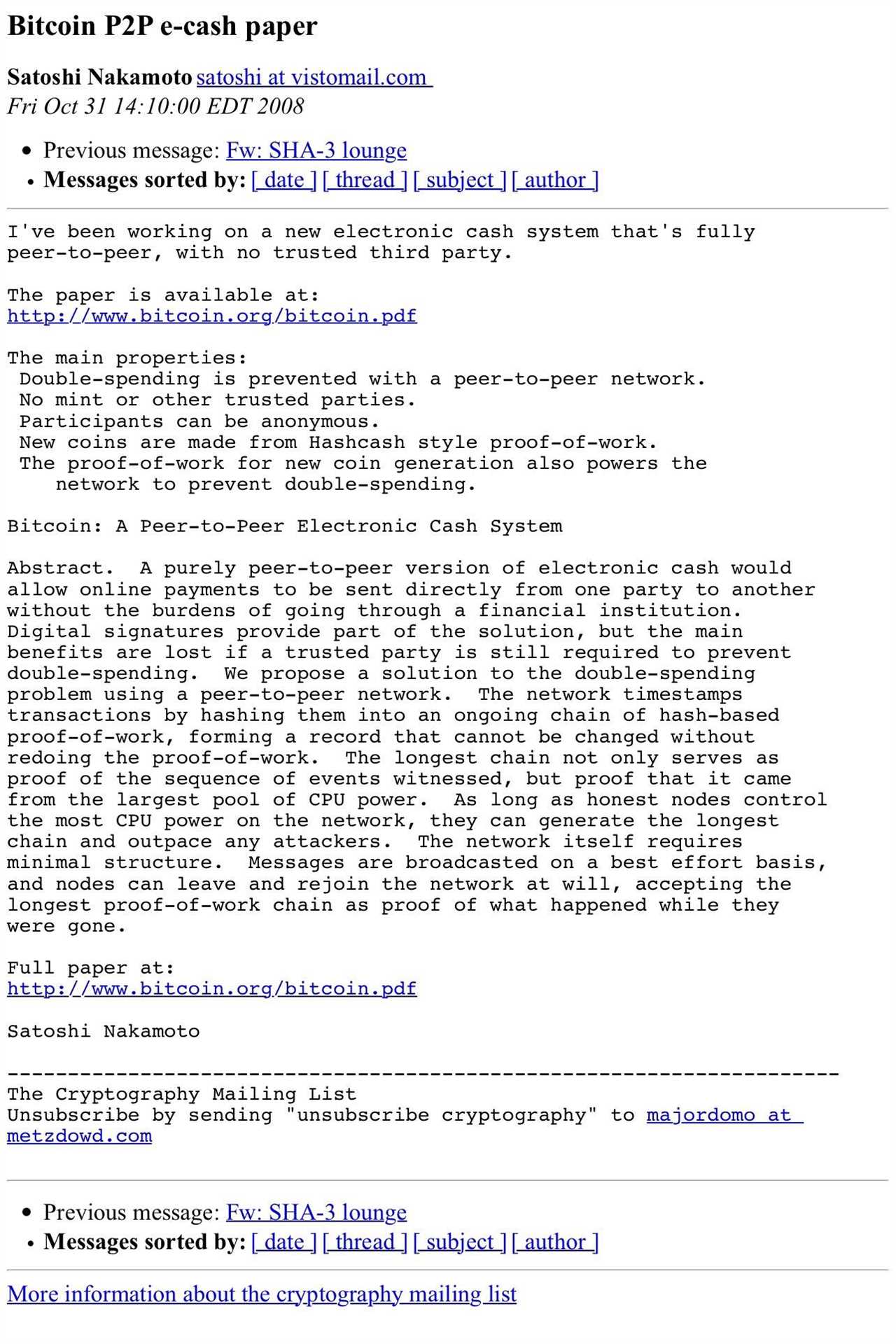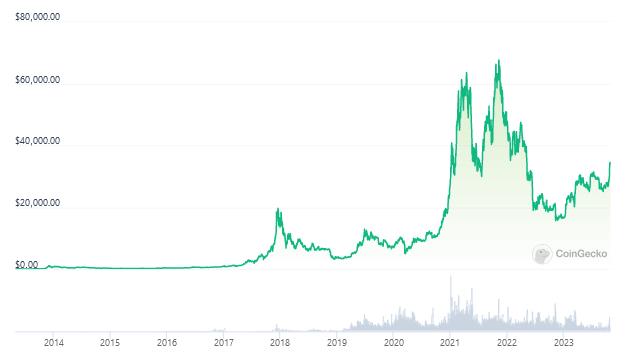
Genesis of a revolution
Today marks 15 years since the pseudonymous creator of Bitcoin, Satoshi Nakamoto, shared the Bitcoin (BTC) white paper to a mailing list of cryptographers on Oct. 31, 2008 - a date also annually celebrated as Halloween.
Unveiling a peer-to-peer electronic cash system
"I've been working on a new electronic cash system that's fully peer-to-peer, with no trusted third party," Satoshi famously said in the opening sentence before linking the document titled: "Bitcoin: A Peer-to-Peer Electronic Cash System."
Solving the double spending problem
The whitepaper proposed a decentralized system that could facilitate peer-to-peer transactions which could solve the "double spending" problem often associated with digital currency.
Building on the foundations
Satoshi's computer science breakthrough came on the back of other impressive developments in the cryptography and e-money space.

From b-money to Bitcoin
The first reference cited in the Bitcoin whitepaper is Wei Dai's invention of b-money, an electronic peer-to-peer cash system which never launched but nonetheless played a key role in Satoshi's plans for Bitcoin.
Proof-of-work and the birth of Bitcoin
Satoshi implemented proof-of-work into Bitcoin, citing Adam Back's invention of Hashcash in 1997 which incorporated proof-of-work to limit e-mail spam and denial-of-service attacks.
The pillars of Bitcoin
Bitcoin's timestamp server, Merkle trees, and digital signatures were all implemented to ensure the integrity and security of the network.
Bitcoin's impact on the world
Bitcoin enabled users to effectively bypass banks and financial institutions to transact with others, all around the world.

Bitcoin's journey
Bitcoin has come a long way since its inception, with increasing adoption and developments to help it scale and bring more use cases to the network.
Price volatility and the present
Bitcoin's price has experienced significant fluctuations over the years, with its current price at $34,350.






